As a child back in Lithuania, I always wanted to be an actor, but opera has taken me in a different direction – though recently it has opened up doors for the big screen and TV. This month Mozart’s Die Entführung aus dem Serail is being beamed live from Glyndebourne Festival into cinemas across the globe with simultaneous streaming live online to some 100,000 people (more than would attend the whole summer festival). Earlier this year, I was filming for a forthcoming documentary – La Traviata: Love, Death and Divas. In both, I’m singing opera but in terms of acting, the screen, stage and theatre call for very different styles.
One of my first encounters of filming was with Sam Taylor-Wood (now Taylor-Johnson). It was for an exhibition at White Cube called Mute and it included a video of me singing Lensky’s famous aria from Onegin but with no sound (see video below). The focus was purely on facial expression and body language, stripped bare of my vital trade. It makes us aware as opera singers that it isn’t only the voice that draws in our audience, it’s every part of our being.
Earlier this year, an exciting call came in from Reef Television who asked me to sing the role of Alfredo for their new documentary presented by Tom Service and Amanda Vickery focusing on the scandalous London premiere of La Traviata in 1856 at Her Majesty’s Theatre. Much to the disapproval of the Victorian establishment, the opera, which was initially panned by the London critics for its “depravity”, subsequently became a hit with female audiences. They needed to film me singing duets with Violetta, played by the Romanian soprano Gabriela Istoc (pictured below with Montvidas) on location in London – which turned out to be the same building on Portland Place where The King’s Speech was filmed (the scenes of the voice lessons to correct the King’s stutter).
In two days of filming, from 9 am to 8 pm, we performed one aria, one duet and the final scene. It’s a very different time-frame to the theatre format. We must have filmed each aria quite a few times from every single angle. Being able to re-do scenes is a strange feeling as a performer; I am used to getting only one take – the live performance! The orchestral part had been recorded previously with Opera North (we sat in on these recordings), but on the day of filming we had to sing along to the muted recording. Getting into costume on the day of filming changes everything – it influences everything, your character, gestures, comportment and all your body language. I was dressed in full Victorian regalia with a particularly fetching wig, which was so realistic, I’d have loved to have kept it.
 With the filmed close-ups in Violetta’s death scene, our facial expressions had to take on a new realism, because small things become much more significant close-up – different from the big gestures in a staged production, more subtle; likewise, we had to scale back our voices as we were not singing to a crowd of a thousand or more. A production crew of 12 were all crammed into this little room with numerous cameras from different angles bearing down on us while I clasped Violetta on the Victorian chaise-longue. Because so much of the footage ends up on the cutting-room floor, there is an army of people checking the continuity so that not one lock of hair is out of place from one take to the next and that we retain the same positions as 20 takes back.
With the filmed close-ups in Violetta’s death scene, our facial expressions had to take on a new realism, because small things become much more significant close-up – different from the big gestures in a staged production, more subtle; likewise, we had to scale back our voices as we were not singing to a crowd of a thousand or more. A production crew of 12 were all crammed into this little room with numerous cameras from different angles bearing down on us while I clasped Violetta on the Victorian chaise-longue. Because so much of the footage ends up on the cutting-room floor, there is an army of people checking the continuity so that not one lock of hair is out of place from one take to the next and that we retain the same positions as 20 takes back.
The quality of a performance on set is important but ultimately the success lies with the cameraman and director in a film. Adrenaline levels are completely different for the live performance – on set it was particularly difficult to keep the spark of the performance alive while constantly being interrupted for relocation, change of lighting, make-up touch-ups, and so on.
In the theatre everything is to the second; in a live performance – mistakes and all – the audience reacts to the moment. There is an extraordinary intimacy – the presence of the audience is very energising and magnetic. Usually there are six weeks of rehearsals such as I have currently at Glyndebourne to build up to a live performance, which is then all over in three hours, only to repeat it a couple of days later. However you feel on the day, everything disappears when you go onto the stage and everything is transformed into that other world.
Ultimately nothing beats a live performance but I’d love to do more for screen, in particular making an opera specifically for film. It is always wonderful when these operas are screened into cinemas and online for free so that it can reach a larger audience.
- Die Entführung aus dem Serail is at Glyndebourne Festival Opera from 13 June to 10 August. The cinema relay is on 19 July with free live streaming (available for a week)
- La Traviata: Love, Death and Divas is on BBC Two on 20 June at 9 pm



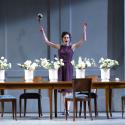





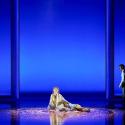

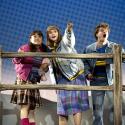
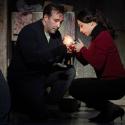
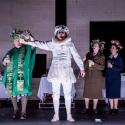
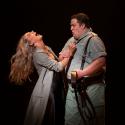
Add comment